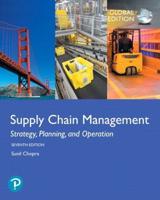Publisher's Synopsis
This is a cross-over book with appeal to business people interested in what makes entrepreneurs succeed (because of its practical guidelines and real-world stories), combined with clear usefulness as a study guide (because of its comprehensive coverage of the key issues, with study exercises). The scope of the book covers distinctive questions in entrepreneurship, such as what gives rise to entrepreneurial opportunity; how to exploit trends; what is the role of innovation / originality; what is execution / implementation, and s role in business success; what do established SMEs do to survive in the middle term? This is a book especially useful for the MBA and professional market. It assumes a level of interest and engagement, but gives clear accounts of concepts and processes so that anyone can come on board. This market does not require a textbook of the traditional kind that seeks to give an even handed exposition of all relevant material. The need is rather for something that is more selective, more purposeful and even more inspirational. Above all it needs to contain a plausible action sequence. The present book does this, implicitly through the chapters and explicitly in the last chapter. The scope of this book is to concentrate on some key issues: What gives rise to entrepreneurial opportunity? How it is possible to exploit trends, and what are these trends? What is the role of innovation/originality? How do companies get started and become self-sustaining? What is execution, does it differ from implementation, and what is its role in business success? What do established SMEs (small and medium sized companies) do to survive in the middle term, and even across family generations? The aim is to raise understanding of these issues by working through a variety of examples, mainly from smaller and/or newer companies in Britain and the USA. Further, to generalise from these companies I have researched. To emphasize throughout the positioning and behaviour likely to lead to success. The book raises understanding of these issues by working through a variety of examples from USA, Britain and Europe. It shows the dynamics of enterprise creation and its development over time, flagging up what seems to work and favour success. Each chapter ends with a set of examples and exercises for the student. The book ends with a glossary of terms and as it unfolds the book has a clear sequence of (10) actions or steps that characterize the successful .small business. TOC Patterns in Entrepreneurial Opportunity Something New Reconfiguration Riding Trends Biography and Capability Take Off to Cruising Altitude Entry Barriers A New Life, A Longer Life Industry Dynamics Patterns of Development Chain Reactions








